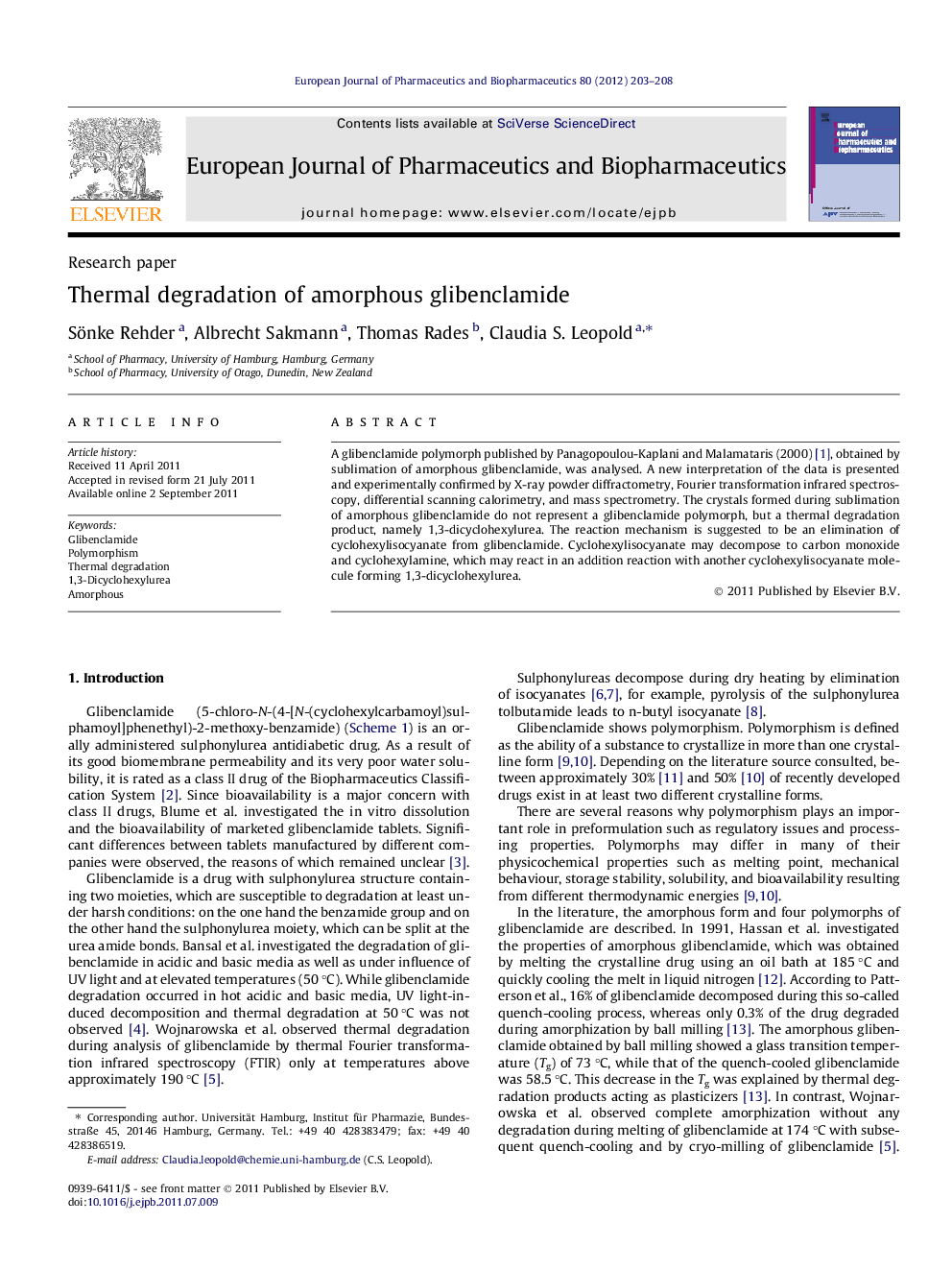| Article ID | Journal | Published Year | Pages | File Type |
|---|---|---|---|---|
| 2085380 | European Journal of Pharmaceutics and Biopharmaceutics | 2012 | 6 Pages |
A glibenclamide polymorph published by Panagopoulou-Kaplani and Malamataris (2000) [1], obtained by sublimation of amorphous glibenclamide, was analysed. A new interpretation of the data is presented and experimentally confirmed by X-ray powder diffractometry, Fourier transformation infrared spectroscopy, differential scanning calorimetry, and mass spectrometry. The crystals formed during sublimation of amorphous glibenclamide do not represent a glibenclamide polymorph, but a thermal degradation product, namely 1,3-dicyclohexylurea. The reaction mechanism is suggested to be an elimination of cyclohexylisocyanate from glibenclamide. Cyclohexylisocyanate may decompose to carbon monoxide and cyclohexylamine, which may react in an addition reaction with another cyclohexylisocyanate molecule forming 1,3-dicyclohexylurea.
Graphical abstractIn 2000, a new glibenclamide polymorph (form IV), obtained by sublimation from the amorphous state, was introduced. Analysis of the substance using various techniques led to the conclusion that the sublimate is not a glibenclamide polymorph, but a thermal degradation product, namely 1,3-dicyclohexylurea.Figure optionsDownload full-size imageDownload as PowerPoint slide
